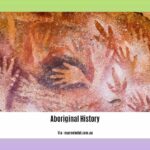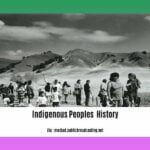Embark on a captivating journey as we delve into [Unveiling the Rich Tapestry of Australian First Nations History]. This comprehensive exploration unveils the complex and profound stories of Australia’s Indigenous peoples, illuminating their ancient traditions, vibrant cultures, and unwavering resilience. Through a lens of respect and inclusivity, we navigate the diverse histories, challenges, and triumphs of Aboriginal and Torres Strait Islander communities, fostering a deeper understanding of their rich legacy.
Key Takeaways:
- Indigenous Australians arrived in Australia tens of thousands of years ago.
- Torres Strait Islander Peoples and Aboriginal Australians lived in Australia for centuries without contact with other cultures.
- The arrival of Europeans in the 17th century significantly impacted Indigenous societies.
- Colonialism and frontier conflicts led to the disruption of Indigenous traditions and lifestyles.
- Disease and settlement had a devastating impact on Indigenous communities.
Australian First Nations History

Early Arrivals and Pre-Colonial Life
Australia’s First Nations history is a saga that began tens of thousands of years ago. They were the first to set foot on this ancient land, coming from Southeast Asia by boat. These early settlers formed hundreds of distinct nations, each with its unique language and culture. They thrived in diverse environments, from arid deserts to lush rainforests, living harmoniously alongside the land’s flora and fauna.
European Contact and Impact
The arrival of Europeans in 1788 marked a turning point in Australian First Nations history. British colonization had a devastating impact, displacing First Nations people from their lands and decimating their populations through disease. Their cultures and traditions were suppressed, and they faced ongoing challenges and adversity.
20th Century and Beyond
The 20th century brought gradual progress. The 1967 referendum saw discriminatory laws removed from the constitution, leading to a number of milestones like land rights and reconciliation initiatives. However, challenges persist today, with First Nations Australians facing higher rates of poverty, unemployment, and incarceration than non-Indigenous Australians.
Celebrating Resilience and Culture
Despite these challenges, First Nations people maintain their resilience and a deep connection to their cultures. They are actively working to preserve their languages, traditions, and art forms, showcasing the vibrancy of their heritage. They are also playing an increasingly important role in Australian society, advocating for their rights and contributing to national discussions on reconciliation and social justice.
Additional Resources
- First Nations Australia:
- AIATSIS:
- National Museum of Australia:
The varied journey of the indigenous people has been a subject of anthropological research for a long period of time. Get to know the rich history of indigenous australians from pre-colonial times through the present.
The indigenous people of Australia have a protracted and unique aboriginal history that dates back thousands of years. Learn about their captivating culture and traditions that have shaped their identity.
The legacy of the indigenous peoples’ history is a testament to their resilience and perseverance. Discover their significant contributions to society and the struggles they have faced throughout time.
European Settlement: A Transformative Chapter in Australian History
Key Takeaways:
-
Early Contacts: Dutch explorer Willem Janszoon landed in Cape York Peninsula in 1606, marking the first documented European arrival.
-
Indigenous Presence: Australia’s Indigenous peoples had flourished for millennia before European settlement, boasting distinct cultures and living harmoniously with the land.
-
Profound Impact: The arrival of Europeans had a devastating impact on Indigenous communities, leading to displacement, disease, and cultural suppression.
-
Resilience and Adaptation: Despite these challenges, First Nations people have shown remarkable resilience, preserving their cultural practices and advocating for their rights.
-
Ongoing Legacy: European settlement continues to shape Australia’s history and contemporary society, leaving a lasting impact on the lives of both Indigenous and non-Indigenous Australians.
Additional Resources
- Exploring Australia’s History: European Exploration and Settlement
The 20th Century in Australian First Nations History

The 20th Century was a pivotal period in Australian First Nations history, marked by significant changes and challenges.
Key Takeaways:
- The 20th Century witnessed the removal of discriminatory policies.
- First Nations people made significant contributions during World War II.
- The post-war era brought about activism for land rights and equality.
Steps Toward Reconciliation:
In 1967, a referendum granted First Nations people the right to vote and be counted in the census, removing discriminatory provisions from the constitution. This milestone marked a turning point in the relationship between Indigenous and non-Indigenous Australians.
Wartime Contributions:
During World War II, First Nations people played a crucial role in supporting the war effort. They served in the military, worked in industries, and provided food and supplies to the troops. Their contributions helped to break down barriers and foster a sense of unity.
Post-War Activism:
After the war, First Nations activists emerged, demanding land rights, equal treatment, and self-determination. They organized protests, lobbied governments, and raised awareness about Indigenous issues. Their efforts led to the establishment of the Aboriginal and Torres Strait Islander Commission (ATSIC) in 1990, which played a key role in improving the lives of First Nations people.
Continuing Challenges:
Despite progress made in the 20th Century, First Nations Australians continue to face challenges. They experience higher rates of poverty, unemployment, and incarceration compared to non-Indigenous Australians. However, their resilience and determination serve as an inspiration for ongoing efforts towards reconciliation and equality.
Citation:
- National Museum of Australia (2023). Aboriginal and Torres Strait Islander History.
Present Day
The Present Day is a time of both challenges and opportunities for First Nations Australians.
Challenges abound. Indigenous Australians continue to face higher rates of poverty, unemployment, and incarceration than non-Indigenous Australians. They are also more likely to experience discrimination and racism.
Despite these challenges, First Nations Australians are working to improve their lives and preserve their cultures. They are involved in a wide range of activities, from education to health care to business. They are also working to promote reconciliation between Indigenous and non-Indigenous Australians.
The Present Day is a time of great change for First Nations Australians. They are facing challenges, but they are also making progress. They are working to build a better future for themselves and their communities.
Key Takeaways:
- First Nations Australians face challenges such as poverty, unemployment, and incarceration.
- Despite these challenges, First Nations Australians are working to improve their lives and preserve their cultures.
- First Nations Australians are involved in a wide range of activities, from education to health care to business.
- First Nations Australians are working to promote reconciliation between Indigenous and non-Indigenous Australians.
- The Present Day is a time of great change for First Nations Australians.
Citation:
Aboriginal and Torres Strait Islander peoples
FAQ
Q1: When did Indigenous Australians first arrive in Australia?
A1: Indigenous Australians arrived in Australia at least 65,000 years ago, making them one of the oldest continuous cultures in the world.
Q2: Who were the Torres Strait Islander peoples, and how are they distinct from Aboriginal peoples?
A2: Torres Strait Islander peoples are the Indigenous inhabitants of the Torres Strait Islands, located between Australia and Papua New Guinea. They are distinct from Aboriginal peoples in their cultural practices, language, and traditional lands.
Q3: How did the arrival of Europeans impact Indigenous Australian communities?
A3: The arrival of Europeans in Australia had a profound and often devastating impact on Indigenous Australian communities. Disease, conflict, and the disruption of traditional lifestyles led to a significant decline in the Indigenous population.
Q4: What challenges have Indigenous Australians faced throughout their history?
A4: Indigenous Australians have faced numerous challenges throughout their history, including discrimination, racism, and the loss of land and cultural heritage. However, they have also demonstrated resilience and adaptability in the face of adversity.
Q5: What are some of the key milestones in the history of Indigenous Australians?
A5: Key milestones in the history of Indigenous Australians include the arrival of Europeans, the frontier wars, the establishment of reserves, and the civil rights movement.
- Unveiling the Enigma: Mansoureh Khojasteh Bagherzadeh’s Public Appearances & Private Life in Iran - July 18, 2025
- Unveiling the Mystery: Mansoureh Khojasteh Bagherzadeh’s Husband: A Rare Glimpse into a Private Life - July 18, 2025
- Unveiling Masoud Khamenei’s Mother: Power, Influence, and Iran’s Future - July 18, 2025
















